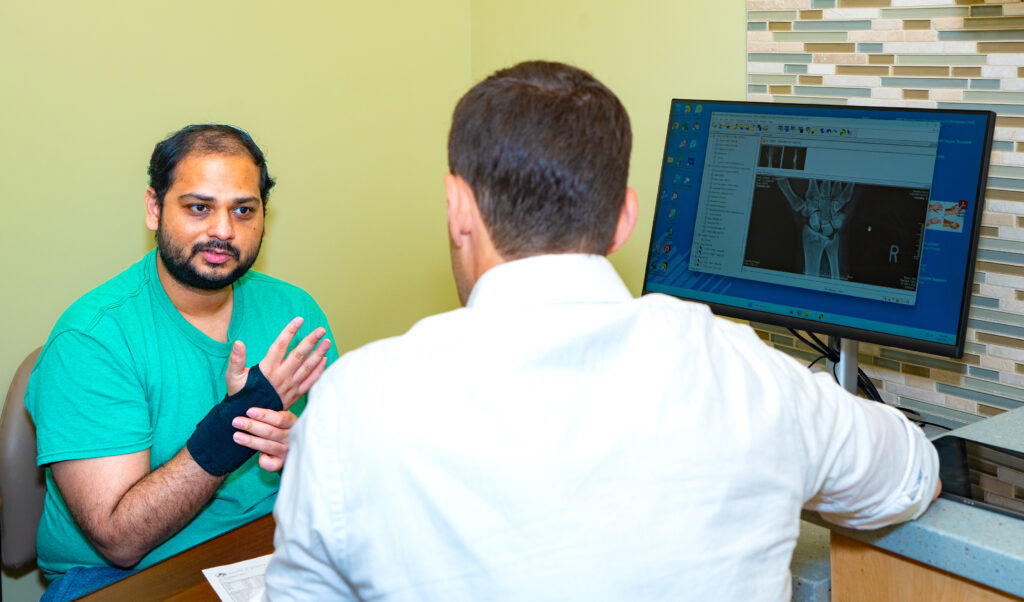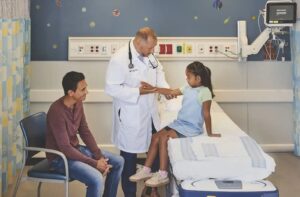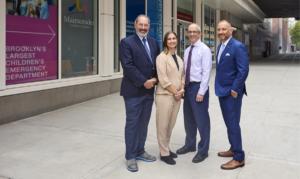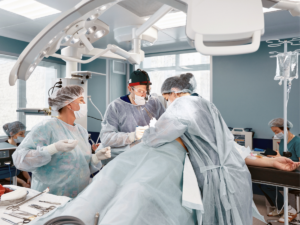Platelet-rich plasma (PRP) injection therapy is an orthobiologic treatment that utilizes a patient’s own blood, spun in a centrifuge to concentrate platelets, to accelerate the body’s natural healing process. When injected into injured tissue, the platelets become activated and release growth factors that aid recovery, recruiting cells for new muscle, bone, cartilage, and more.
At Maimonides Bone & Joint Center and beyond, PRP has been used to treat conditions like tennis elbow and plantar fasciitis, or to help patients recover more quickly from surgery. While it doesn’t provide immediate relief like corticosteroids, it promotes actual healing, unlike corticosteroids, which can in certain circumstances weaken tissue over time.
Expanding the Scope of PRP
While it’s not a rarity for doctors to administer this treatment, many are unaware of emerging best practices that can be decisive in the success of the PRP healing process.
Philip Montana, MD, MFA, Maimonides sports medicine physician and an expert in orthobiologics, prolotherapy, and other nonsurgical orthopedic interventions, is utilizing his expertise in PRP to help patients overcome painful conditions like tendonitis, ligament tears, and osteoarthritis. Conditions like these could previously only be addressed with surgical repairs, but PRP offers a viable nonsurgical alternative to help them get back to their daily lives more quickly and with less pain.
“There’s a big advantage for patients to using PRP injections, in terms of getting lasting pain relief without the need for surgery,” says Dr. Montana. “This therapy has been available at Maimonides for some time, but we recently expanded it from being a therapy only for injured joints to now being able to inject PRP into tendons, ligaments, and the meniscus of the knee.”
New Protocols to Maximize Patient Outcomes
Dr. Montana is passionate about the future of PRP across the field of orthopedics. In the past few years, more and more literature has emerged, shaping new guidelines for best practices in administering PRP and managing the healing process. Along with following these best practices for his patients, Dr. Montana is active in leading the field of PRP therapy forward, and educating other practitioners in the field on new guidelines through lectures, presentations, and roundtable discussions.
“When it comes to factors like the rehabilitation process, it is becoming increasingly clear that their management and success is just as important as doing the PRP injection itself,” he says. “There are no established, universal protocols with PRP, but for my patients, I’ve established return protocols and rehab processes that are much more stringent than other physicians may require, and we are seeing a great effect in terms of successful healing and getting the most out of these injections.”
Along with this established rehabilitation process, Maimonides patients will also see the benefit of having access to the most updated PRP technology. A brand-new set of machines allows platelets to be concentrated at 40 times the normal level in blood, whereas machines that may be used by other organizations only concentrate it to double this level.
“Research has come out recently showing that when you concentrate PRP, you have to reach a certain level of platelets and growth factors in the fluid in order to actually get an adequate response, and this equipment helps us to do that,” says Dr. Montana.
The Maimonides Difference
Patients for whom this can be most effective include those who have chronic tendonopathy and tendonitis like tennis elbow or jumper’s knee, or midrange osteoarthritis. They may already be monitored and managing pain with their primary care provider or a physical therapist, but aren’t seeing results or long-term relief. These conditions may require additional evaluation of the extent of the injury, and Dr. Montana is highly experienced in using ultrasound to diagnose a wide range of orthopedic conditions.
Additionally, PRP can be advantageous for athletes who are looking to recover more quickly from injuries like muscle tears, while avoiding options like corticosteroids that can weaken tissue in the long term.
For both athletes and those suffering from chronic conditions, PRP has the capacity to accelerate healing, with minimal downsides — minor discomfort and low risk of infection and complication. It also eliminates or decreases the need for surgical intervention.
Dr. Montana and the Bone & Joint Center team are passionate about bringing patients the best possible PRP care with the most updated equipment, in a setting where patients aren’t just a number.
“Often, doctors will just administer the PRP and then send people on their way,” says Dr. Montana. “I think that sometimes that helps people get better, but closely following patients and being active in their healing and rehabilitation process is really what creates the most lasting healing effect.”
For more information about Maimonides Bone & Joint Center, visit https://maimo.org/treatments-care/bone-and-joint-center/. To refer a patient, call (718) 283-7400.




